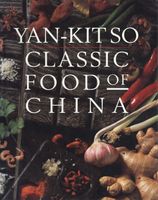Label
All
0
Clear all filters
🌷 Spring savings – save 25% on ckbk Premium Membership with code SPRING25
Fish and Shellfish
Appears in
By Yan-Kit So
Published 1992
The Chinese culinary approach towards fish, whether it be the species of fish that appeal to the tastebuds or the methods of cooking them, is vastly different from that of the West.
To begin with, the Chinese have a penchant for freshwater fish, harvested from rivers and lakes, or cultivated in ponds. Records show that fish farming goes back a long time. Certainly by the Tang dynasty (AD 618–907), many Chinese farmers were keeping carp in their ponds and hence were getting a cheap form of protein from them, even though they may not have realised it. They found that compared to livestock, it was relatively cheap to farm carp, for they would eat most scraps, including the droppings from silkworms that fed on mulberry leaves hanging over the ponds, not to mention bits and pieces of vegetables and other grain foodstuffs thrown in as their feed. As a result, the Chinese eat more carp than any other peoples in the world, and they wax lyrical about the delicate texture and flavour of these fish, even though other people – except Central and Eastern Europeans – dismiss them as bony, muddy and insipid.
Become a Premium Member to access this page
Unlimited, ad-free access to hundreds of the world’s best cookbooks
Over 150,000 recipes with thousands more added every month
Recommended by leading chefs and food writers
Powerful search filters to match your tastes
Create collections and add reviews or private notes to any recipe
Swipe to browse each cookbook from cover-to-cover
Manage your subscription via the My Membership page
Best value
In this section
Advertisement
Advertisement
The licensor does not allow printing of this title


